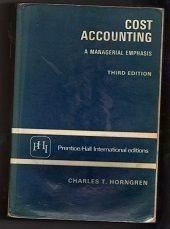Way Cool produces two different models of air conditioners. The company produces the mechanical systems in their components department. The mechanical systems are combined with the housing assembly in its finishing department. The activities, costs, and drivers associated with these two manufacturing processes and the production support process follow. Activity Components Changeover Machining Setup Driver Number of batches Machine hours Number of setups Quantity 750 7,910 100 Finishing Welding Inspecting Rework Overhead Cost $ 462,000 313,000 234,000 $1,009,000 S 182,000 224,000 64,500 $ 470,500 S 133,00 37,500 70,000 $ 240, 500 Welding hours Number of inspections Rework orders 5,200 840 130 Support Purchasing Providing space Providing utilities Purchase orders Number of units Number of unita 495 5,180 5,180 Additional production information concerning its two product lines follows. Units produced Melding hours Batches Number of Inspections Machine hours Model 145 2,100 1,300 375 480 2,550 Model 212 3,080 3,400 375 360 50 VOEK order Purchase orders Required: 1. Determine departmental overhead rates and compute the overhead cost per unit for each product line. Base your overhead assignment for the components department on machine hours. Use welding hours to assign overhead costs to the finishing department. Assign costs to the support department based on number of purchase orders 2. Determine the total cost per unit for each product line of the direct labor and direct materials costs per unit are $190 for Model 145 Required: 1. Determine departmental overhead rates and compute the overhead cost per unit for each product line. Base your overhead assignment for the components department on machine hours. Use welding hours to assign overhead costs to the finishing department. Assign costs to the support department based on number of purchase orders. 2. Determine the total cost per unit for each product line if the direct labor and direct materials costs per unit are $190 for Model 145 and $160 for Model 212 3. If the market price for Model 145 is $1,625 and the market price for Model 212 is $280, determine the profit or loss per unit for each model Complete this question by entering your answers in the tabs below. Required 1 Required 2 Required 3 Determine departmental overhead rates and compute the overhead cost per unit for each product line. Base your overhead assignment for the components department on machine hours. Use welding hours to assign overhead costs to the finishing department. Assign costs to the support department based on number of purchase orders. (Round your intermediate calculations and per unit cost answers to 2 decimal places.) Show less Components department Overtond costs Machine hours Finishing department 0 Support department Welding hours Saved Components department Overhead costs Machine hours Finishing department of 0 Support department 0 Welding hours Model 145 Activity Driver Departmental OH Rate Total Overhead Cost s 0 Components Finishing Support $ 0 0 Model 212 Activity Driver Departmental OH Rate Total Overhead Cost $ 0 Components Finishing Support S 0 0 DIS COSUS 5 point and $160 for Model 212. 3. If the market price for Model 145 is $1,625 and the market price for Model 212 is $280, determine t model. Complete this question by entering your answers in the tabs below. Required 1 Required 2 Required 3 Determine the total cost per unit for each product line if the direct labor and direct materials costs per unit 145 and $160 for Model 212. (Round your intermediate calculations and cost per unit answers to 2 decimal Complete this question by entering your answers in the tabs below. Required 1 Required 2 Required 3 If the market price for Model 145 is $1,625 and the market price for Model 212 is $280, determine the prof for each model. (Loss amounts should be indicated with a minus sign. Round your intermediate calculations to 2 decimal places.) Model 145 Model 212 Market price per unit Cost per unit Profit (loss) per unit











